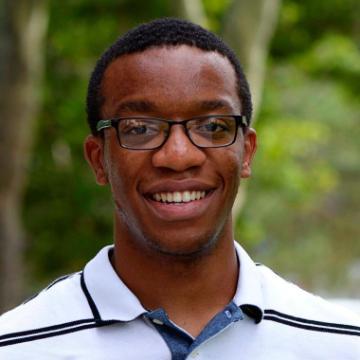Diversity in STEM Education

Nnaoma Agwu is a mentor in the TNI After-School Program.
In celebration of National Engineers Week and Black History Month, we asked bioengineering senior Nnaoma Agwu to share his thoughts on diversity, convergent STEM education, and how the two support the Jesuit mission to “educate the whole person.” Following is his response.
In all fields of engineering, teamwork exists as an integrated part of developing breakthrough technology for the modern world. Whether in research, design projects or industry, teamwork creates a space for unique ideas to be nurtured and developed. But what type of “unique ideas” can be brought forth where homogeneity of class, race, age, sex and gender exist? With similar questions in mind, I recently took part in a discussion about “The Power of Diversity in Solving Tough Problems” focused on why diversity in STEM education is necessary. With a group of faculty and students, we discussed the importance of diversity in teaching and research and how diversity in culture, backgrounds, demographics, expertise and thought contributes to STEM.
Along with our introductions, we were asked to give our experience of diversity in action relative to research, teaching, projects or work. Some of the faculty talked about the different scientific and mathematical symbols used to express the same information within different fields of engineering and their work with undergraduate students during their post-doctorate programs. These experiences allowed them to value and broaden their scope of what they originally believed about their work. Other faculty talked about a change of perspective when working with disabled children in Boy Scouts or teaching gardening to children in kindergarten. The kindergarteners and the Boy Scouts interacted with the physical world in a curious and pure way. These faculty members marveled and reminisced about the curiosity and innocence of children and how essential their curious mindset is in education. With a change of perspective and new lenses of thinking, the faculty understood the power of working with groups of different abilities in education challenging them in their work as a professor to their students and research.
The faculty all recognized the importance of diversity in STEM, which was very impressive to me. As an African-American engineering student, working and studying with those who do not look like me or come from a similar background can be intimidating. This was partially the case for me during my freshman year. I felt nervous and anxious to voice my opinions or contribute my ideas in class. Worried I would be wrong, I waited until the end of class to ask questions privately. When talking to professors and studying with students, I noticed that my ideas and thoughts were valued and wanted as a part of classroom discussion. My input not only benefitted me but also my professors’ and peers’ engagement with issues discussed in class. I came to understand that questioning and challenging the material is critical to my development as an engineer; equally important is invoking the thoughts and ideas of others as well.
Open and safe spaces fostered this mutual growth; however this could not have happened without opportunity. With opportunities to conduct research and aid in projects alongside diverse peers and professors, students could then question, challenge, and learn with others. In better terms, cognitive friction opens holes in arguments and forces open-ended thinking from everyone. To have open and safe spaces with cognitive friction appears counteractive but it embodies the Jesuit mission of educating the whole person and building students of competence, conscience, and compassion at Santa Clara University. Although uncomfortable feelings may surface, the space to see each other’s differences leads to commonalities and united efforts where innovation, critical thinking and problem-solving flourish. Diversity in STEM builds valuable characteristics within individuals and resonates with the Jesuit mission to educate the whole person. Not only does diversity in STEM provide the opportunity for individuals of all backgrounds and ethnicities to contribute toward the fields of science and engineering, it also promotes innovation, critical thinking and learning that crosses both cultural and educational boundaries.